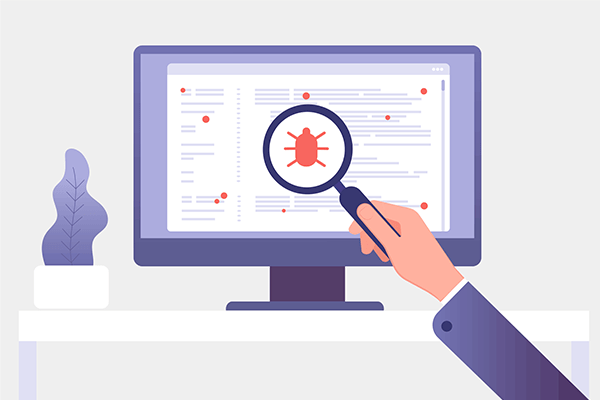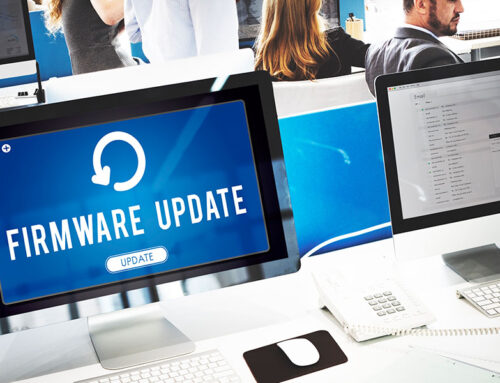To remain competitive in today’s market, many businesses rely on various software solutions and applications, either developed in-house or from IT service providers. While these options help improve efficiency and the employee and customer experiences, they’re also prone to vulnerabilities that can put the company at risk of a cyberattack. Implementing a successful vulnerability management program is a necessary step in your overall IT risk management plan to protect your business from these threats.
If your company doesn’t currently engage in vulnerability management, it’s important to understand the potential consequences and what you can do to develop a successful vulnerability management solution as part of your overall cybersecurity strategy.
How Does a Vulnerability Management Program Protect Your Business?
The purpose of a vulnerability management program is to keep your network safe from known exploitations and ensure it stays compliant with any regulatory requirements. It does this by analyzing your network for any incompatibilities, missed updates and common weaknesses within the software you use. It then prioritizes any vulnerabilities for remediation. A vulnerability management program protects your business network from being breached through well-known vulnerabilities, making it much harder for cybercriminals to target your company. It can also help protect your business from any penalties associated with regulatory noncompliance, saving you money and your company’s reputation.
What Does a Vulnerability Management Program Look Like?
Vulnerability management programs should be proactive and ongoing. Regular use ensures that your vulnerability management tools are always up to date with the latest patches and aids you in the fight against data breaches. A standard vulnerability management plan has four steps.
Discovery

This step uses a vulnerability scanner to explore the network, discovering all relevant IT assets and mapping out every potential source for vulnerabilities. Vulnerability scanning includes desktops, mobile devices, firewalls, printers, databases and servers. Then, each source is probed for areas of potential vulnerability, such as installed software, operating system, user accounts, system configurations, open ports, etc. The scan consists of four stages.
- Pinging all network-accessible systems
- Identifying services and open ports on relevant systems
- Collecting detailed system information from systems that allow remote log-in
- Comparing system information to a database of currently known vulnerabilities
This process builds the foundation for your vulnerability management process, ensuring all relevant systems are covered. It’s important to note that vulnerability scanners can sometimes be disruptive, whether by tying up significant bandwidth during the scan or causing some applications to behave erratically. To mitigate this, schedule the scan during times of slower traffic and either exclude problem applications or set the scans to be less disruptive. This is known as adaptive scanning.
Evaluation
 Now that the scan has discovered all the potential known cyber security vulnerabilities, it’s time to evaluate them for prioritization. It’s possible that the scan revealed thousands of possible weak points, but some pose a greater risk than others. To organize them, a vulnerability assessment should be performed where all vulnerabilities are rated or scored in terms of the threat to the company if they’re exploited. Although there are many systems that can be used for prioritizing, the Common Vulnerability Scoring System (CVSS) is one of the most referenced. Each time you run your scan and new vulnerabilities are exposed, it’s important to go through this prioritization process again to find those that are most critical to your IT security.
Now that the scan has discovered all the potential known cyber security vulnerabilities, it’s time to evaluate them for prioritization. It’s possible that the scan revealed thousands of possible weak points, but some pose a greater risk than others. To organize them, a vulnerability assessment should be performed where all vulnerabilities are rated or scored in terms of the threat to the company if they’re exploited. Although there are many systems that can be used for prioritizing, the Common Vulnerability Scoring System (CVSS) is one of the most referenced. Each time you run your scan and new vulnerabilities are exposed, it’s important to go through this prioritization process again to find those that are most critical to your IT security.
Response
 Once identified vulnerabilities have been prioritized, it’s time to address them individually. Solutions for possible threats should be discussed with all relevant stakeholders to create a solid plan of action. Depending on the level and type of risk posed by each vulnerability, there are three actions that can be taken at this point.
Once identified vulnerabilities have been prioritized, it’s time to address them individually. Solutions for possible threats should be discussed with all relevant stakeholders to create a solid plan of action. Depending on the level and type of risk posed by each vulnerability, there are three actions that can be taken at this point.
- Remediation: This is the preferred action to take whenever possible. Patching or fixing the vulnerability to prevent any chance of exploitation offers the most protection. Whether that involves software updates or blocking an application, the point of vulnerability remediation is to completely eliminate the threat.
- Mitigation: If remediating a vulnerability isn’t feasible, mitigating vulnerabilities is the next best option. This is an option when your company can’t immediately remediate and needs to buy some time with the intention of remediating at a later date. The point of mitigation is to reduce the likelihood of the vulnerability being exploited, lowering the threat level temporarily until it can be fixed. Possible courses of action can include increasing authentication requirements or restricting access until a full solution is established.
- Acceptance: Sometimes vulnerabilities will be identified that pose a very low risk for exploitation or involve a remediation cost that far outweighs the cost of exploitation. In these cases, it may be appropriate to leave it alone and focus your attention on those that are more critical. Ideally, this should be kept to a minimum to keep potential security risks as low as possible.
Once this process is complete, it’s important to run an additional vulnerability scan to ensure the remediation actions were effective and eliminated the most critical threats. If some have not been addressed as expected, it’s time to look further into the issue for alternative solutions.
Reporting and Follow-Up
 Once actions have been taken against the exposed vulnerabilities, it’s time to put the reporting tools found in vulnerability management solutions to work. This provides the security team with an overview of the effort required for each remediation technique, allowing them to identify the most efficient way to address vulnerability issues moving forward. Actions taken at this point can include setting up patching tools, automatic update scheduling and coordinating with the cyber IT security staff to set up a ticketing system that addresses security issues as they arise. These reports can also be used to ensure compliance with any regulatory bodies within your industry by displaying your level of risk for a breach and actions you’ve taken to reduce that risk. With the tactics of cybercriminals continually evolving, vulnerability management assessments should be performed regularly to keep the number of vulnerabilities low and your network security up to date.
Once actions have been taken against the exposed vulnerabilities, it’s time to put the reporting tools found in vulnerability management solutions to work. This provides the security team with an overview of the effort required for each remediation technique, allowing them to identify the most efficient way to address vulnerability issues moving forward. Actions taken at this point can include setting up patching tools, automatic update scheduling and coordinating with the cyber IT security staff to set up a ticketing system that addresses security issues as they arise. These reports can also be used to ensure compliance with any regulatory bodies within your industry by displaying your level of risk for a breach and actions you’ve taken to reduce that risk. With the tactics of cybercriminals continually evolving, vulnerability management assessments should be performed regularly to keep the number of vulnerabilities low and your network security up to date.
Eire Systems is dedicated to keeping your company protected. Contact us today to learn more about how our comprehensive IT security and technical expertise can benefit your business.
About the Author: EIRE Systems
EIRE Systems is a leading independent provider of professional IT, AV and Access Security services to the financial, insurance, manufacturing, health care, retail, construction, hospitality, commercial real estate, legal, educational and multinational sectors in Japan and throughout the Asia Pacific region. EIRE Systems has expertise across a wide spectrum of Information Technologies, with a track record for successfully completing hundreds of assignments since its establishment in 1996.



